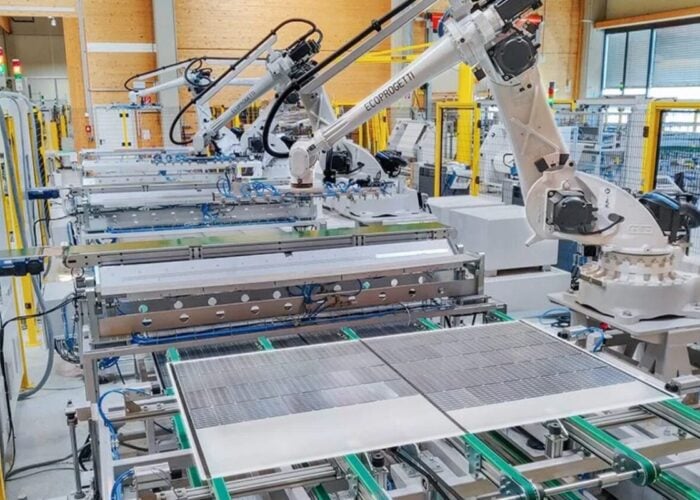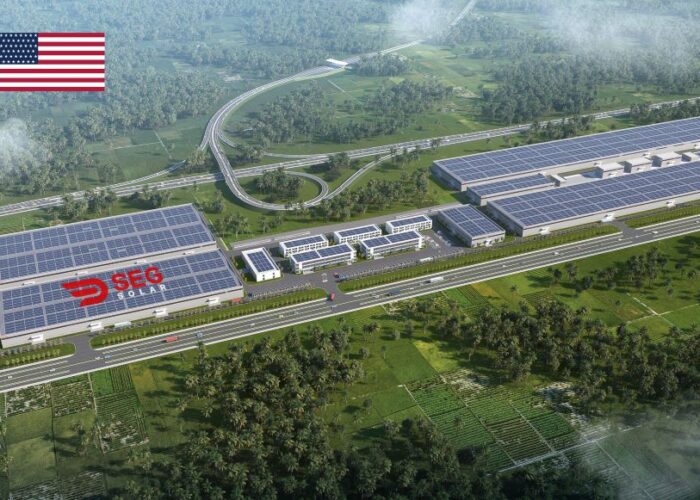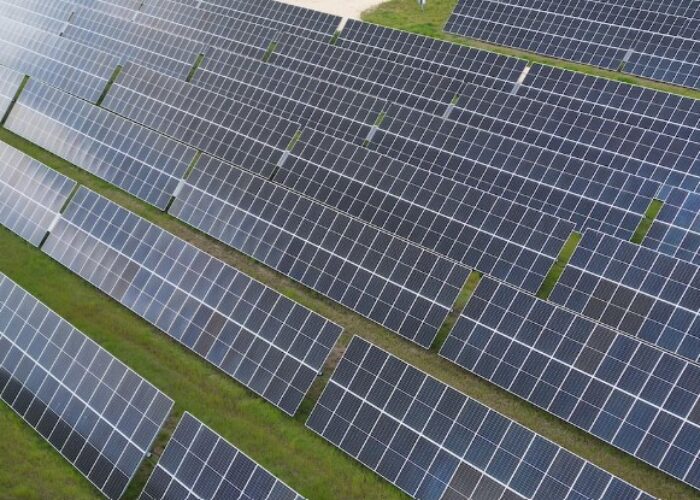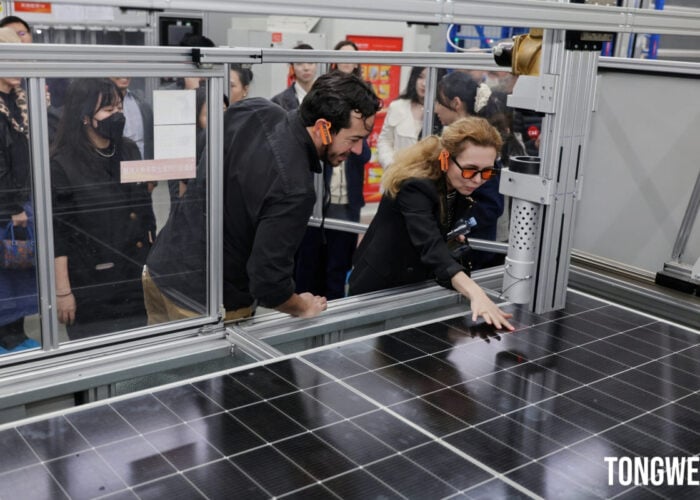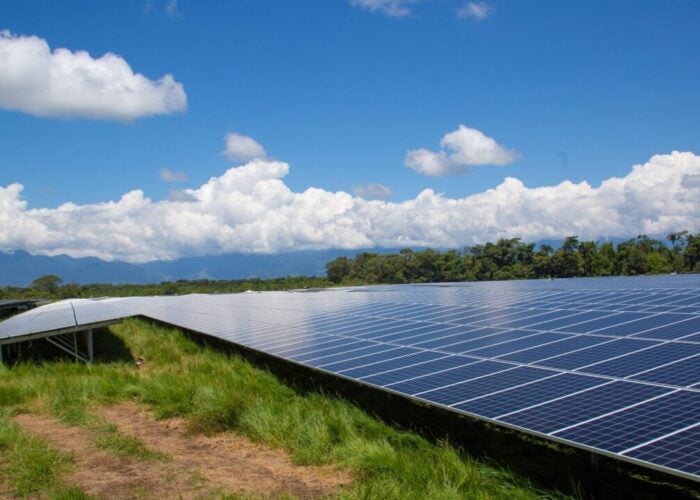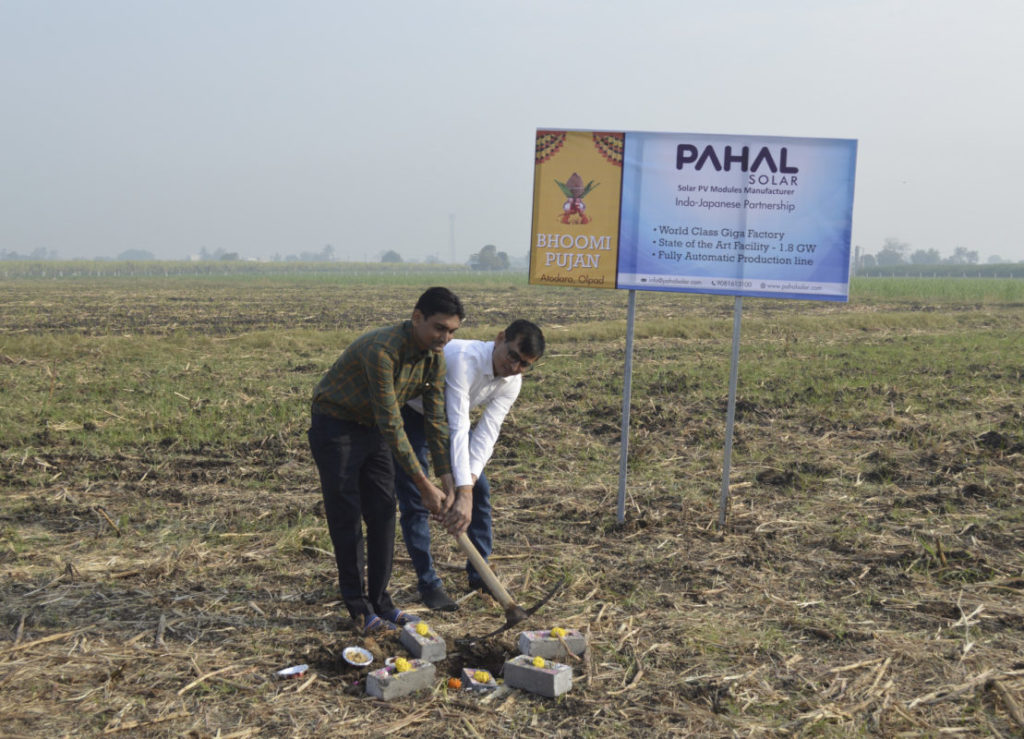
Indian PV module manufacturer Pahal Solar has broken ground on a new fully-automated facility at Surat in the state of Gujarat, which will expand the company’s manufacturing capacity from 800MW to 1.8GW, with a primary focus on commercial and industrial (C&I) and residential clients across India as well as in the US and African markets.
The quality of the modules will be tested in an in-house testing laboratory with the raw materials tested to meet high quality standards, Nitin Barvaliya, general manager, Pahal Solar, tells PV Tech Premium.
Try Premium for just $1
- Full premium access for the first month at only $1
- Converts to an annual rate after 30 days unless cancelled
- Cancel anytime during the trial period
Premium Benefits
- Expert industry analysis and interviews
- Digital access to PV Tech Power journal
- Exclusive event discounts
Or get the full Premium subscription right away
Or continue reading this article for free
The modules qualify for all Indian government-provided certificates, and the company is listed under the Approved List of Models and Manufacturers (ALMM). The ALMM mandate was reimposed on 1 April this year, and will require solar projects awarded by India’s central nodal agencies and state distribution utilities to source PV modules only from the manufacturers included in the ALMM list, as the government looks to encourage greater investment into domestic solar manufacturing.
The new facility will start production in May or June this year to get the panels on the market as soon as possible, says Barvaliya.
Meeting government targets
Pahal Solar, which is partnered with multinational Spanish and Japanese Corporation Univergy, started with 40MW of manufacturing capacity in 2016 and has a long-term aim to reach 2.5GW in 2025. At present, its module capacities range from 400Wp to 640Wp using a strategic blend of monocrystalline passivated emitter and rear contact (mono PERC) and n-Type tunnel oxide passivated contact (TOPCon) solar cell technology, with both mono and bifacial options, adds Barvaliya.
The choice of technology was partly driven by moves made by Chinese cell manufacturers, who form the majority of the industry, switching to TOPCon, with both Trina Solar and DMEGC launching TOPCon products last year.
The company focuses primarily on distributed solar generation. The rooftop focus will cater for the capacity additions expected under Indian prime minister Narendra Modi’s recent announcement in Ayodhya of a scheme to install rooftop solar on ten million homes, which has given extra confidence to Indian manufacturers that “huge” amounts of domestic module capacity will be needed.
Pahal Solar also aims to supply high efficiency solar modules to Modi’s KUSUM Scheme, a 2019 plan to install solar pumps and grid-connected solar for farmers in all states of India, as it looks to expand its footprint beyond the residential sector.
This emphasis on domestic Indian production echoes recent figures in the Indian solar sector. Yesterday, figures from JMK Research noted that six of the top ten companies in terms of total module shipments in India in 2023 are based in the country.
While the top three PV module suppliers to India are all from China, Jinko Solar, LONGi and Trina Solar, the top three manufacturers based in India, Waaree, Adani and Vikram Solar, all export around 60-65% of their modules.
Raw materials and inverter diversification
Indian PV manufacturers are “totally dependent” on the government’s renewable energy policies, says Barvaliya, but there are huge requirements of domestically-produced modules in those policies, hence the decision to expand the Pahal Solar’s capacity at this point in time to gigawatt scale.
The company is planning to expand its manufacturing capabilities and diversify its product offerings as part of a push for vertical integration. It plans to make other solar components such as ethylene vinyl acetate (EVA), back sheets, junction boxes, frames and busbars, but not solar glass and cells, which it will continue to source from China or local suppliers.
It also plans to manufacture raw materials for solar modules after the establishment of the 1.8GW factory, as India looks to significantly expand its solar product manufacturing capacity in the coming years, as shown in the graph above.
Additionally, the firm is planning to enter into a partnership with an unnamed leading inverter company, which could result in the firm also manufacturing inverters for the residential and C&I segments.
Automation and optimisation
Notably, Pahal Solar has opted for using automation with advanced machinery and robotic systems in its manufacturing to enhance precision and efficiency, reduce reliance on manual labour, and increase overall productivity.
Automation can also help to minimise the risk of human error, ensuring consistent quality and performance of the solar modules and other products; and can optimise use of resources, thereby minimising wastage of raw materials and reducing energy consumption.
“Overall, the adoption of automation in Pahal Solar’s manufacturing line will play a vital role in enhancing productivity, ensuring consistent quality, improving cost-efficiency, and supporting the company’s growth in the solar industry,” Barvaliya adds.
The company aims to supply modules to various regions across India based on market demand and project requirements, and to do so it will appoint business partners in each state to establish a strong distribution network.
Pahal Solar’s presence also extends beyond India, having already supplied solar modules to Africa, and it has eyes on further international markets such as the US, once it has established a strong domestic presence in India.

